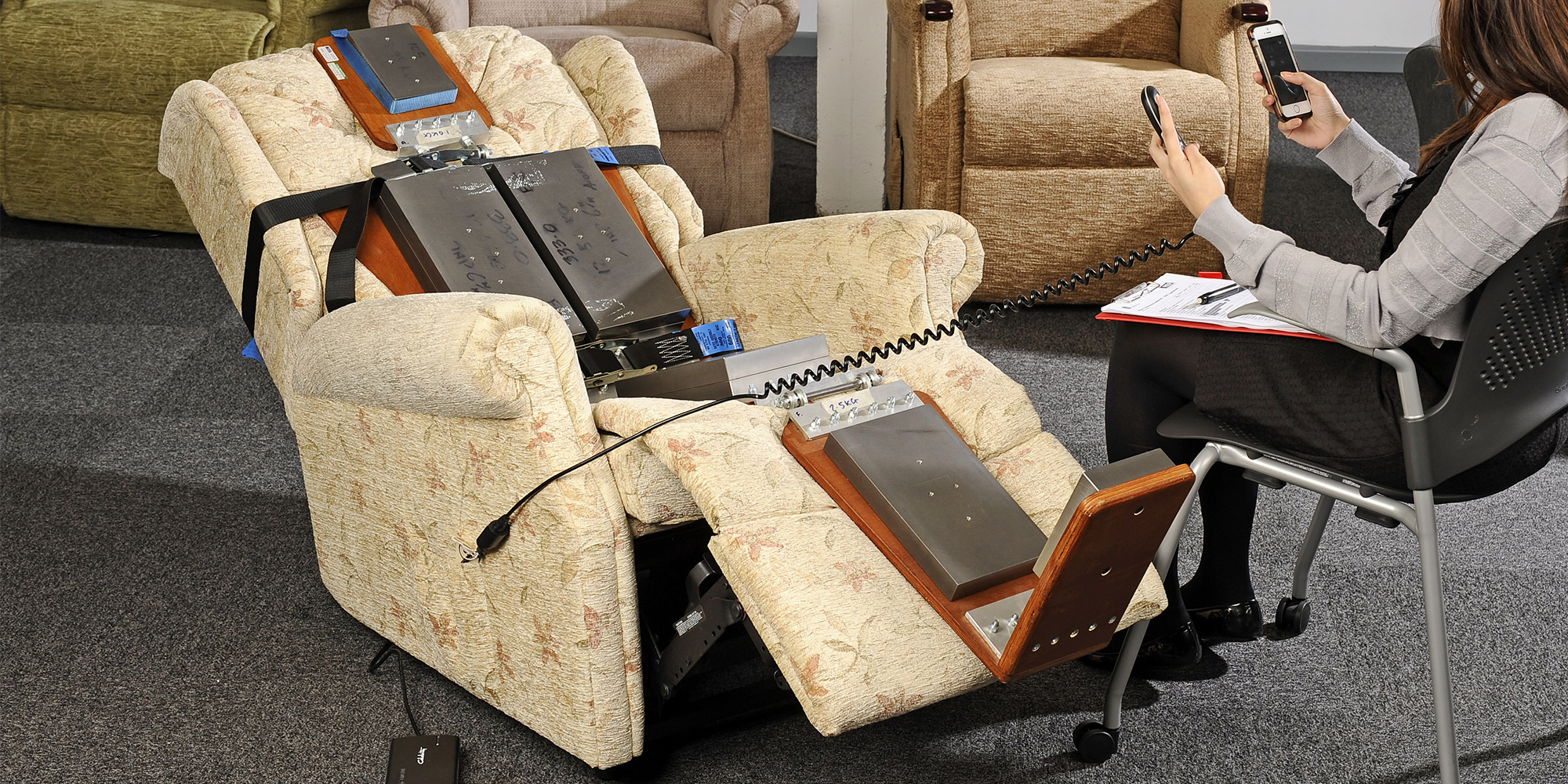UNE EN 1022 Stability Testing of Adjustable Furniture Seating Units
The UNE EN 1022 standard specifies the methods for determining the stability of seating units in recliners and other adjustable furniture. This test is crucial to ensure that the products meet safety, comfort, and performance standards required by various sectors such as hospitality, healthcare, and home furnishings.
The primary purpose of this testing is to evaluate how well the furniture holds its position during use under specified loading conditions. The standard covers a wide range of scenarios, including static loads at different angles of recline and dynamic loads that simulate real-world usage patterns. Compliance with UNE EN 1022 ensures that manufacturers can market their products as safe and reliable, which is essential for building trust among consumers.
The testing procedure involves placing the adjustable seating unit in various positions while applying a defined load. The load simulates the weight of an average user plus additional factors such as momentum when changing position or external forces like wind gusts. After applying the load, the tester must observe if any part of the furniture moves beyond predefined limits without compromising structural integrity.
Proper specimen preparation is critical for accurate results. This includes selecting appropriate materials and dimensions that mimic actual product designs but are large enough to accommodate testing equipment accurately. It also involves ensuring all adjustments (e.g., armrests, footrests) are set according to manufacturer specifications before beginning the test.
When using UNE EN 1022 stability tests for R&D purposes, it's important to consider both static and dynamic loading conditions since users interact with these products continuously. Static testing helps identify potential issues early in development stages when design changes can be made more easily. Dynamic tests provide insights into how the furniture responds over time under realistic usage scenarios.
For procurement teams looking at suppliers, confirming compliance with UNE EN 1022 is one way to ensure quality control throughout production processes. By specifying this standard in contracts or purchasing requirements documents, buyers can help drive consistency across supply chains while maintaining high standards of safety and durability.
The results from these tests contribute significantly towards improving product design by highlighting areas needing improvement based on empirical data rather than assumptions alone. This information allows manufacturers to enhance their offerings continually without compromising user experience.
Scope and Methodology
The UNE EN 1022 standard applies specifically to the stability of seating units found in adjustable furniture like recliners, massage chairs, office chairs with reclining features, etc. These pieces are designed for comfort but must also remain stable under various loading conditions.
The scope includes both static and dynamic load tests aimed at evaluating how securely the seat remains positioned during use. Static testing typically involves applying a specified weight directly onto the center of the seat back while measuring any movement or deformation in response. Dynamic testing simulates real-world situations where users may change positions frequently, exerting force on different parts of the furniture over time.
For static tests, the load is applied gradually until reaching its maximum value, held for a set period, then released abruptly to observe the reaction. This allows engineers to assess not only immediate stability but also resilience after sudden changes in position. Dynamic tests often involve continuous application and removal of loads at regular intervals throughout extended periods simulating prolonged use.
Both types of testing must adhere strictly to specified tolerances regarding maximum allowable displacement or tilt angles, ensuring that even minor deviations could indicate potential risks requiring further investigation. Compliance with these limits provides confidence in the overall structural integrity of the product under typical operating conditions.
Competitive Advantage and Market Impact
Compliance with UNE EN 1022 stability testing offers several advantages that can significantly impact a company's competitive position within its market. Firstly, it demonstrates commitment to quality and safety standards recognized internationally, which enhances brand reputation among consumers who prioritize product reliability.
Secondly, successful completion of these tests allows manufacturers to differentiate their offerings from competitors by highlighting superior performance metrics in terms of stability and durability. This can be particularly beneficial when targeting specific niches like healthcare facilities or high-end residential settings where trustworthiness is paramount.
Thirdly, adherence to such standards fosters better relationships with regulatory bodies and potential customers, reducing the likelihood of recalls or fines associated with non-compliance incidents. In turn, this promotes long-term sustainability by avoiding costly reworks or lost business opportunities due to reputational damage.
In addition to direct benefits for individual firms, widespread adoption of UNE EN 1022 stability testing contributes positively to industry standards overall. By setting a benchmark for excellence in product design and manufacturing practices, this standard helps elevate the entire sector's reputation within both domestic markets and international trade circles.
Use Cases and Application Examples
In healthcare settings, stability tests like those outlined by UNE EN 1022 are vital for ensuring patient safety. For instance, a hospital bed equipped with adjustable features must be secure enough to support patients without tipping over during movement or sudden shifts in position. Compliance ensures that medical staff can rely on these pieces of equipment confidently, knowing they meet rigorous international standards.
Similarly, in residential applications, particularly for elderly individuals or those with mobility challenges, stable furniture provides peace of mind by preventing falls and injuries. Adjustable seating units designed to promote better posture also benefit from thorough stability testing to ensure they maintain their intended support functions while remaining secure.
Office environments present another significant application area where UNE EN 1022 plays a role in enhancing employee well-being. Ergonomically designed chairs that offer multiple adjustment options need robust stability testing to guarantee comfort and proper alignment during extended periods of work.
Beyond these examples, numerous other sectors can benefit from incorporating UNE EN 1022 into their quality assurance processes. Educational institutions, hotels, fitness centers, and even public transportation systems all stand to gain from implementing this standard across their respective portfolios of adjustable seating solutions.





